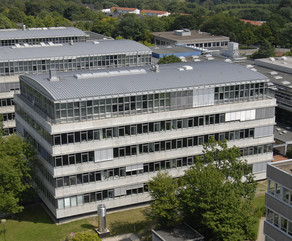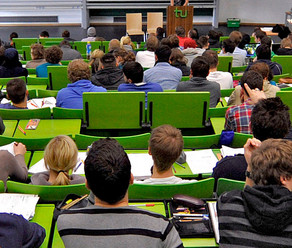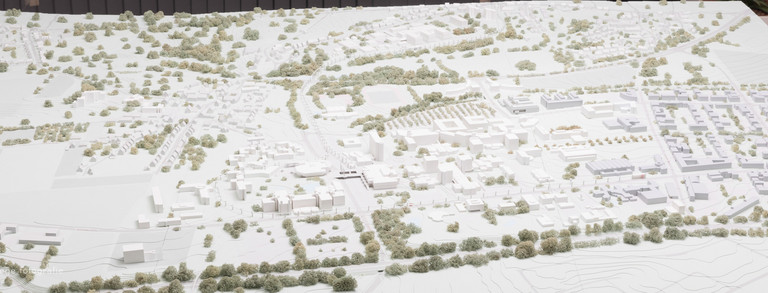05 - Understanding Older People's Access and Usage of urban green space (UGS). Is it different across the city of Dortmund?
Beschreibung
Ageing populations are found in almost all countries worldwide due to decreases in mortality and fertility rates (United Nation, 2015). Germany is among those countries where this demographic change has been identified and has advanced the most. The proportion of the population aged 60 and older is proliferating in Germany. In 2005, 20% of the German population were under 20 and 19% were over 65. By 2050, only 50% will be working age, with over 30% over 65 and 15% under 20 (Federal Statistical Office., 2008, 2016). As people age, they may experience health issues. However, most German seniors (citizens) aged 65 and above feel physically fit. Only a small percentage, less than 25%, experience health issues affecting their daily routines (Federal Statistical Office., 2008). Physical and social environments can positively influence older adults' physical activity and social connections.
It is widely acknowledged that urban green spaces (UGS) positively impact the well-being of city dwellers (Rall et al., 2015; Rayan et al., 2022).Proximity to UGS can significantly increase the longevity of older adults (EC, 2013; Takano et al., 2002) and promote social engagement, physical activity, relaxation, and interaction with nature (Bedino-Rung et al., 2005; Harnik, 2006). Furthermore, UGS are highly beneficial for stimulating the mind and senses, providing safe opportunities for older adults to be active and engage with people from different backgrounds (Tinsley et al., 2002; Tzoulas et al., 2007).Therefore, from a planning perspective, ensuring good access to (UGS) and usage of UGS can positively impact the health of older adults. However, despite the numerous potential benefits offered by UGS, the older adult population appears to visit these areas less frequently than other age groups (Bedino-Rung et al., 2005; Lee & Maheswaran, 2011; Payne et al., 2002; Scott & Jackson, 1996). This poses a significant challenge in maximising the usage of green spaces within communities and encouraging physical activity among older adults.
The focus of the F-project is to conduct a comprehensive empirical case study to gain a deeper understanding of the perceptions about, access to, and usage of UGS (referred to as public parks) among older people in different socioeconomic areas across Dortmund city. In the project, differences can be investigated and compared.
Literatur
Bedino-Rung, A. L., Mowen, A. J., & Cohen, D. A. (2005). The significance of parks to physical activity and public health. American Journal of Preventive Medicine, 28(s2), 159–168.
European Commission. (2013). Green Infrastructure (GI) –Enhancing Europe’s natural capital. European Commission: Brussels, Belgium.
Federal Statistical Office. (2008). Germany’s population by 2050. Results of the 11th coordinated population projection. FSO. www.destatis.de/EN/Themes/Society-Environment/Population/Population-Projection/Publications/Downloads-Population-Projection/germany-population-2050.pdf
Federal Statistical Office, . (2016). Older people in Germany and the EU. Wiesbaden: Federal Statistical Office.
Harnik, P. (2006). The excellent city park system: What makes it great and how to get there. The Human Metropolis: People and Nature in the 21st-Century City [Full Book], 47.
Lee, A. C. K., & Maheswaran, R. (2011). The health benefits of urban green spaces: a review of the evidence. Journal of Public Health, 33(2), 212–222.
Payne, L. L., Mowen, A. J., & Orsega-Smith, E. (2002). An examination of park preferences and behaviors among urban residents: the role of residential location, race, and age. Leisure Sciences, 24(2), 181–198.
Rall, L., Niemela, J., Pauleit, S., Pintar, M., Lafortezza, R., Santos, A., & Železnikar, Š. (2015). A typology of urban green spaces, eco-system services provisioning services and demands. Report D3, 1.
Rayan, M.; Gruehn, D.; Khayyam, U (2022). Planning for Sustainable Green Urbanism: An Empirical Bottom-Up (Community-Led) Perspective on Green Infrastructure (GI) Indicators in Khyber Pakhtunkhwa (KP), Pakistan. Int. J. Environ. Res. Public Health 2022, 19, 11844. https://doi.org/10.3390/ijerph191911844
Scott, D., & Jackson, E. L. (1996). Factors that limit and strategies that might encourage people’s use of public parks. Journal of Park and Recreation Administration, 14(1), 1–17.
Takano, T., Nakamura, K., & Watanabe, M. (2002). Urban residential environments and senior citizens’ longevity in megacity areas: the importance of walkable green spaces. Journal of Epidemiology & Community Health, 56(12), 913–918.
Tinsley, H. E. A., Tinsley, D. J., & Croskeys, C. E. (2002). Park usage, social milieu, and psychosocial benefits of park use reported by older urban park users from four ethnic groups. Leisure Sciences, 24(2), 199–218.
Tzoulas, K., et al., 2007. Promoting ecosystem and human health in urban areas using green infrastructure: A literature review. Landsc. Urban Plan. 81 (3), 167–178. https://doi.org/10.1016/j.landurbplan.2007.02.001 .
United Nation. (2015). World population ageing 2015. United Nations, Department of Economic and Social Affairs Population ….
Remark:
The project group is required to determine the size of the case study and the sample frame. For instance, they must decide whether to sample six or seven UGS located in different socioeconomic areas throughout the city of Dortmund. This will enable them to examine and understand patterns of variation in the accessibility and usage of community green spaces by seniors from various socioeconomic backgrounds. Finally, the project group will establish criteria for identifying and selecting the potential UGS for further examination.
Nachweis
Prüfung: Modulprüfung (benotet), 2 Studienleistungen (unbenotet)
Prüfungsform: Abschlussbericht inkl. Disputation
Studienleistungen: (A) Exposé; (B) Zwischenpräsentation, Plakat und Abstract im Rahmen des Projektmarktes
Termine
Di 14-18 Uhr wöchentlich 17.10.2023-30.01.2024 Raum 307 GB III
Fr 14-18 Uhr wöchentlich 13.10.2023-02.02.2024 Raum 307 GB III
Veranstaltungsnummer: 0910305
Studienfach: B.Sc. 5-6
Art: Seminar, max. Teilnehmer 12
Semester: WiSe 2023/2024
Zielgruppe: B.Sc.
Verantwortlich: Muhammad Rayan








